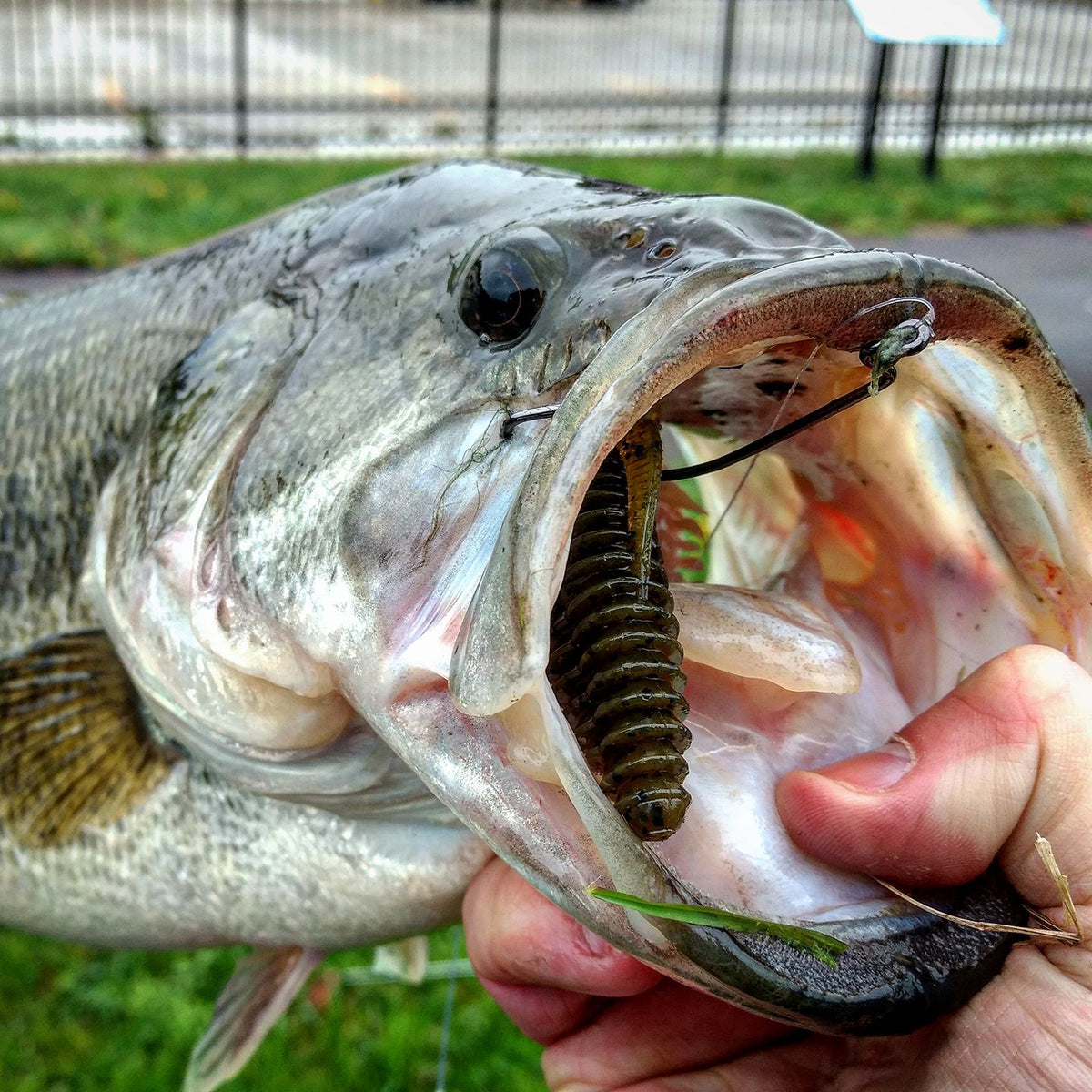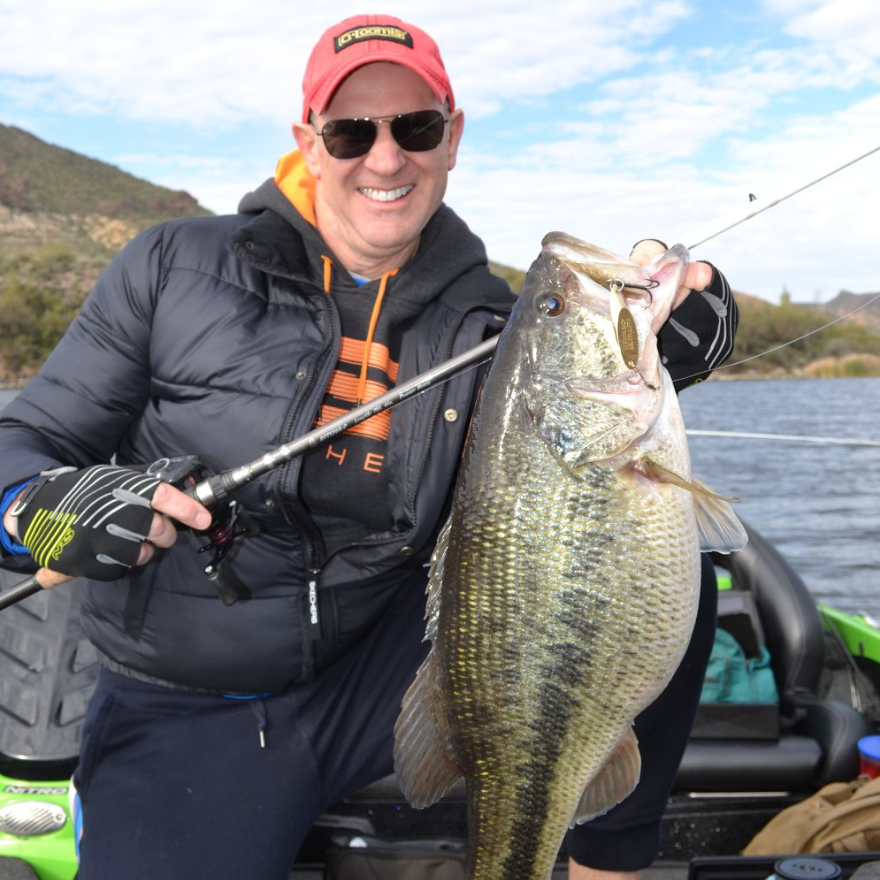8 Bass Fishing Lures for Early Morning and Dusk Fishing
Discover the Best Methods for Selecting Bass Lures for Your Following Fishing Journey
Picking the appropriate bass Lures can dramatically affect fishing success. Anglers must consider different aspects, such as seasonal patterns and water clearness. Comprehending bass behavior is essential (Best Bass Fishing Lures). Selecting Lures that imitate natural victim can lead to better outcomes. Lots of are uncertain regarding the best strategies to execute. What techniques should one prioritize to enhance their angling experience? The solutions depend on checking out particular conditions and adjusting as necessary
Understanding Bass Habits and Habitat
Recognizing the subtleties of bass actions and habitat is necessary for any fishermen intending to enhance their fishing success. Bass are usually located in numerous settings, including reservoirs, lakes, and rivers, where they seek structure such as immersed rocks, greenery, and fallen trees. Their behavior is heavily influenced by water temperature, light degrees, and readily available forage.
During warmer months, bass often tend to be extra active, commonly living in shallower waters, while in colder months, they pull away to much deeper locations. Furthermore, bass display patterns of feeding, commonly being more aggressive during dawn and sundown. They are opportunistic killers, preying on smaller sized fish, bugs, and crustaceans. Recognizing these elements can assist fishermens determine prime fishing areas, along with the most effective times to fish. Identifying bass actions in relation to their habitat is essential for successful angling, directing fishermens in making educated choices about where to cast their lines.
Matching Lures to Seasonal Conditions
As fishermens adapt their methods to transforming seasons, matching Lures to seasonal problems comes to be a crucial strategy for boosting fishing success. In spring, when bass are arising from wintertime dormancy, fishermens often use spinnerbaits and shallow-running crankbaits to simulate the activities of victim. Summertime requires a shift to topwater Lures or soft plastic worms, as bass look for shade and cooler waters. During the loss, when bass are fattening up prior to winter months, bigger Lures that imitate baitfish can be efficient. Winter requires an extra refined strategy; jigs and slow-moving skill baits frequently generate much better outcomes as bass end up being tired. Understanding these seasonal patterns helps fishermens choose the appropriate appeals, therefore enhancing their chances of an effective catch. By straightening attraction selections with the all-natural behavior of bass throughout the year, fishermens can maximize their angling experience and improve their total success on the water.
The Value of Color Option
Shade choice plays an important role in bass angling, as it can substantially impact a fisher's success. Variables such as water clearness, seasonal adjustments, and the details choices of various bass species all influence which colors are most efficient. Understanding these components permits fishermens to make educated choices that improve their fishing experience.
Water Clarity Considerations
When the water clearness differs, selecting the right bass attraction color comes to be vital for attracting fish. In clear water, natural colors such as shad or bluegill patterns tend to be much more reliable, as they imitate the victim bass are accustomed to seeing. Conversely, in dirty or tarnished water, brighter shades like chartreuse or fire tiger can boost visibility, making it simpler for bass to detect the appeal. The comparison between the lure and the surrounding atmosphere plays a considerable function in angling success. Anglers must also think about the moment of day; lighter shades may function much better in bright sunshine, while darker colors can be a lot more efficient throughout low-light problems. Adapting appeal shade to water clearness maximizes the possibilities of an effective catch.
Seasonal Color Scheme
How do seasonal changes impact bass habits and lure effectiveness? As temperature levels change throughout the year, bass readjust their feeding routines and favored habitats, making color option critical for effective angling. In spring, when bass spawn, intense shades like chartreuse can stand out. Summer months commonly call for even more natural shades, such as eco-friendly pumpkin or shad patterns, as bass seek to assimilate with their surroundings. During fall, dynamic colors like orange and red simulate the changing vegetation, attracting bass as they get ready for wintertime. In winter months, suppressed tones such as white or grey might be much more reliable, as bass become inactive. Ultimately, comprehending seasonal color scheme enables anglers to select Lures that reverberate with bass's present habits, boosting their possibilities of success.

Species-Specific Preferences
Understanding species-specific preferences is crucial for anglers wanting to enhance their appeal selection. Different bass varieties, such as largemouth and smallmouth, display unique color preferences based upon their environment and feeding actions. Largemouth bass often choose darker shades, specifically in dirty waters, where shades like dark and black eco-friendly simulate natural victim. On the other hand, smallmouth bass are more probable to respond to brighter shades, such as chartreuse and orange, especially in clear waters. Furthermore, water clarity and light problems can affect these preferences, making it crucial for fishermens to adjust their appeal shade accordingly. By taking into consideration these species-specific preferences, fishermens can raise their chances of an effective fishing expedition, inevitably enhancing their general experience on the water.
Picking the Right Lure Type for Different Circumstances
Picking the suitable appeal kind for different angling scenarios is crucial for success on the water. Fishermens need to consider elements such as water clarity, weather conditions, and the bass's feeding behaviors. For dirty water, darker-colored appeals, such as spinnerbaits or jigs, can be reliable, as they produce a strong shape. In clear water, natural-colored Lures like soft plastics or topwater baits may tempt careful bass.
When fishing in heavy cover, making use of heavy jigs or weedless rigs can assist browse via obstacles without getting. On the other hand, open water situations might gain from crankbaits or swimbaits that can cover greater ranges. Additionally, during cooler months, slower-moving Lures have a tendency to be my link much more efficient, while warmer problems may require faster retrieves. By adjusting attraction selections to details environments, fishermens enhance their opportunities of an effective catch.
Try out Size and Action

Anglers often try out a range of dimensions and activities to determine what works best under differing problems. A slow-moving, subtle action may be optimal in cooler water, while a quickly, hostile fetch could be a lot more reliable in warmer temperature levels. By meticulously observing the bass's responses to these variants, anglers can refine their approach and enhance their possibilities of an effective catch. Eventually, the appropriate mix of dimension and activity can make a significant distinction on the water.
Checking Out Water Problems for Better Lure Selections
Understanding water conditions is essential for choosing the right bass lure. Elements such as water clarity and temperature can significantly influence fish habits and feeding patterns. By examining these problems, anglers can make informed decisions that boost their possibilities of a successful catch.
Evaluating Water Clarity
Just how does water clarity influence the efficiency of bass lures? Water quality considerably affects bass habits and the visibility of appeals. In clear water, bass have a tendency to be more cautious, making natural-colored Lures extra efficient as they simulate victim carefully. Fishermens might select lighter, subtler colors to stay clear of spooking fish. Alternatively, in dirty or stained water, better and even more vibrant shades stand apart, standing out also in reduced visibility problems. In addition, the kind of lure can differ; slower-moving Lures might function much better in clear water, while much faster, much more hostile discussions can entice bass in murkier settings. Recognizing the quality of the water enables fishermens to select Lures that optimize their chances of success during their fishing trips.
Recognizing Water Temperature Level
As water temperature level rises and fall, it directly influences bass habits and their feeding patterns, making it critical for anglers to consider when picking lures. Generally, bass prefer warmer temperatures, usually in between 65 ° F and 75 ° F, where their metabolism is increased, leading to increased feeding activity. In cooler water, bass come to be sluggish and might prefer slower-moving attractions, such as jigs or soft plastics. On the other hand, throughout warmer months, faster presentations like crankbaits or topwater Lures can be extra efficient. Anglers must additionally think about seasonal modifications; for example, spring warming results in aggressive feeding as bass prepare to spawn. By recognizing just how temperature impacts bass, fishermens can make informed choices on attraction choice, significantly enhancing their opportunities of success.
Tips for Organizing and Preserving Your Lure Collection
While numerous fishermens concentrate on choosing the ideal Lures for their following angling trip, preserving a lure and organizing collection is similarly essential for improving effectiveness and performance. A well-structured collection permits anglers to rapidly find the Lures they require, lowering time spent searching through take on boxes.
To start, anglers need to categorize Lures by type-- crankbaits, jigs, or soft plastics-- making it much easier to find details options. Using take on trays or boxes with adjustable compartments can help keep everything arranged. Identifying containers streamlines the procedure additionally, aiding quick identification.
Normal upkeep is also essential; anglers should evaluate Lures for indications of wear, such as rusted hooks or harmed paint, and replace them as required. Cleaning Lures after each trip prevents wear and tear and makes sure durability. By executing these organizational and upkeep techniques, anglers can boost their fishing experience and guarantee their Lures are constantly in optimum condition.
Regularly Asked Questions
What Are the most effective Brand Names for Bass Lures?
The most effective brand names for bass Lures consist of Rapala, Strike King, and Berkley. These brand names are renowned for their quality, technology, best site and performance, appealing to both novice and seasoned fishermens looking for effective angling experiences.
How Many Lures Should I Handle a Journey?
A common angling journey must include around five to ten lures, enabling for convenience while preventing mess. This option should encompass different types and shades to adjust to altering problems and fish choices.
Can I Make My Own Bass Lures?
Yes, individuals can make their very own bass Lures utilizing various products and strategies - Best Bass Lures. Crafting Lures permits customization, allowing anglers to explore sizes, shades, and forms to match specific fishing conditions and preferences
What's the Ordinary Lifespan of a Bass Lure?
The average life-span of a bass appeal differs, typically lasting from a few months to several years, depending on worldly high quality, use regularity, and ecological conditions. Proper care can dramatically prolong an appeal's functionality.
Exist Particular Lures for Evening Fishing?
Yes, there specify Lures developed for night fishing. Dark colors and Lures that produce resonances, such as spinnerbaits or jigs, usually attract bass in low-light conditions, enhancing visibility and setting off predatory reactions.
On the other hand, in murky or stained water, brighter colors like chartreuse or fire tiger can enhance exposure, making it simpler for bass to find the lure. Bigger Lures can bring in bigger bass, while smaller sized Lures might be much more reliable for capturing smaller sized fish. Furthermore, the type of attraction can differ; slower-moving Lures might function much better in clear water, while quicker, more hostile discussions can lure bass in murkier settings. As water temperature level fluctuates, it straight affects bass actions and their feeding patterns, making it important for anglers to think about when choosing attractions. While several anglers concentrate on choosing the right Lures for their following fishing trip, arranging and keeping an attraction collection is similarly crucial for improving performance and performance.